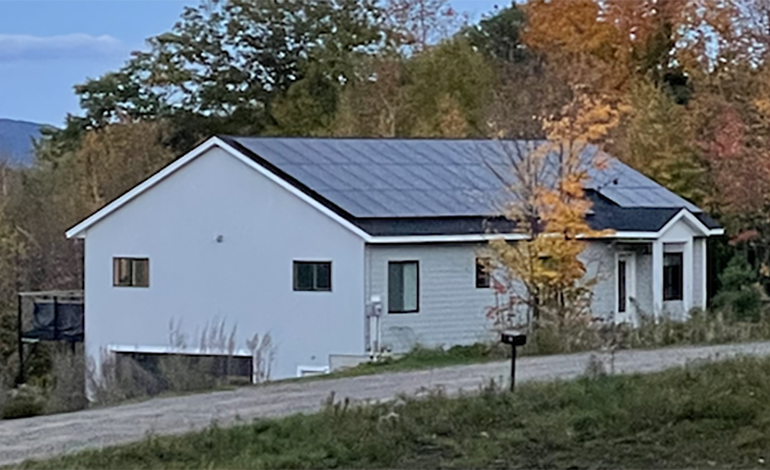By Odette Mucha, Vote Solar and Luis Nasvytis Torres, Earthjustice
Local energy resources have the potential to equitably distribute the benefits of clean energy in a way that provides jobs, resilience and savings to communities left out of our century-old electricity grid. These resources – like rooftop and community solar, and battery storage – have demonstrated this potential and are the most affordable solution in the transition to a clean energy future.
That is the unequivocal finding of a new, state-of-the-art utility roadmapping study, commissioned by Local Solar for All and conducted by Vibrant Clean Energy. The study shows how the country can achieve President Biden’s climate and equity goals at lowest cost and greatest benefit to U.S. electricity customers. The report is part of a growing body of research that calls out the financial and societal benefits of significantly growing the amount of local, distributed solar and storage deployed on the U.S. electric grid.
At least 103 gigawatts of distributed solar (rooftop and community solar) and 137 gigawatts of distributed energy storage must be deployed during this decade to reach 80% clean electricity by 2035 at the lowest cost – a savings of $109 billion versus a future that decarbonizes the electric grid with only utility-scale renewable energy generation. Over the next ten years, distributed generation must grow between two to four times faster than it grew in the previous decade in order to reach the country’s climate and energy goals at the lowest cost. The growth of these resources fuels the savings. This plan starts saving on utility costs and reducing electric bills immediately.
As the Senate negotiates the specific provisions of the Build Back Better Act, they must not lose sight of the tremendous benefits of distributed energy resources for the grid, for our communities, and for our wallets.
Scaling up local solar and storage will help to achieve the Administration’s Justice40 goals, which promise to bring 40% of the benefits of clean energy investments to underserved communities. Distributed renewables are a unique vehicle for energy justice because they have a direct economic relationship with the people that own and control them, and their benefits can be directed accordingly. Targeted investments in solar and battery deployment for economically underserved groups can reduce household energy burden, lessen race and gender wealth gaps, and measurably improve families’ health and quality of life.
Many additional benefits flow directly from job creation. Vibrant Clean Energy’s analysis revealed that increasing local solar and storage would lead to the creation of more than 1.2 million new American jobs by 2030. Local renewables create the most jobs per megawatt of power installed, creating robust job opportunities and building economic power in underserved communities near population centers, where power generation is most needed.
Jigar Shah, Director of the DOE LPO will give a keynote speech on this topic at next month’s DISTRIBUTECH Connect, an invitation-only gathering of utility executives and power producers that will take place in Dallas, January 24-25.See if you qualify to attend Connect by visiting this link
Local solar and storage also serve as resilient infrastructure in communities that are disproportionately impacted by climate-related stresses and extreme weather. Distributed energy resources can keep the lights on when power grids and major transmission lines fail, allowing communities to weather service disruptions that can have fatal consequences.
Our coalition of advocates representing civil rights, Indigenous, environment, equity, rural, and business organizations is calling on Congress and state policymakers to prioritize the equitable and just deployment of renewable energy.
Among other measures, Congress can enable the growth of local solar and storage by extending and expanding the solar investment tax credit and including a low-income bonus and a direct payment option for homeowners and businesses alike, creating a $7 billion grant fund for zero-emission technologies, such as rooftop and community solar, to be deployed in underserved communities, and prioritizing low-income families’ access to distributed energy resources.
Growing local solar and batteries will create millions of good-paying, family-sustaining green jobs, enable more resilient communities, and save us billions – all while ensuring that the country’s clean energy transformation is equitable and just. This is our moment to build a clean energy future for all, and we must not fail.







